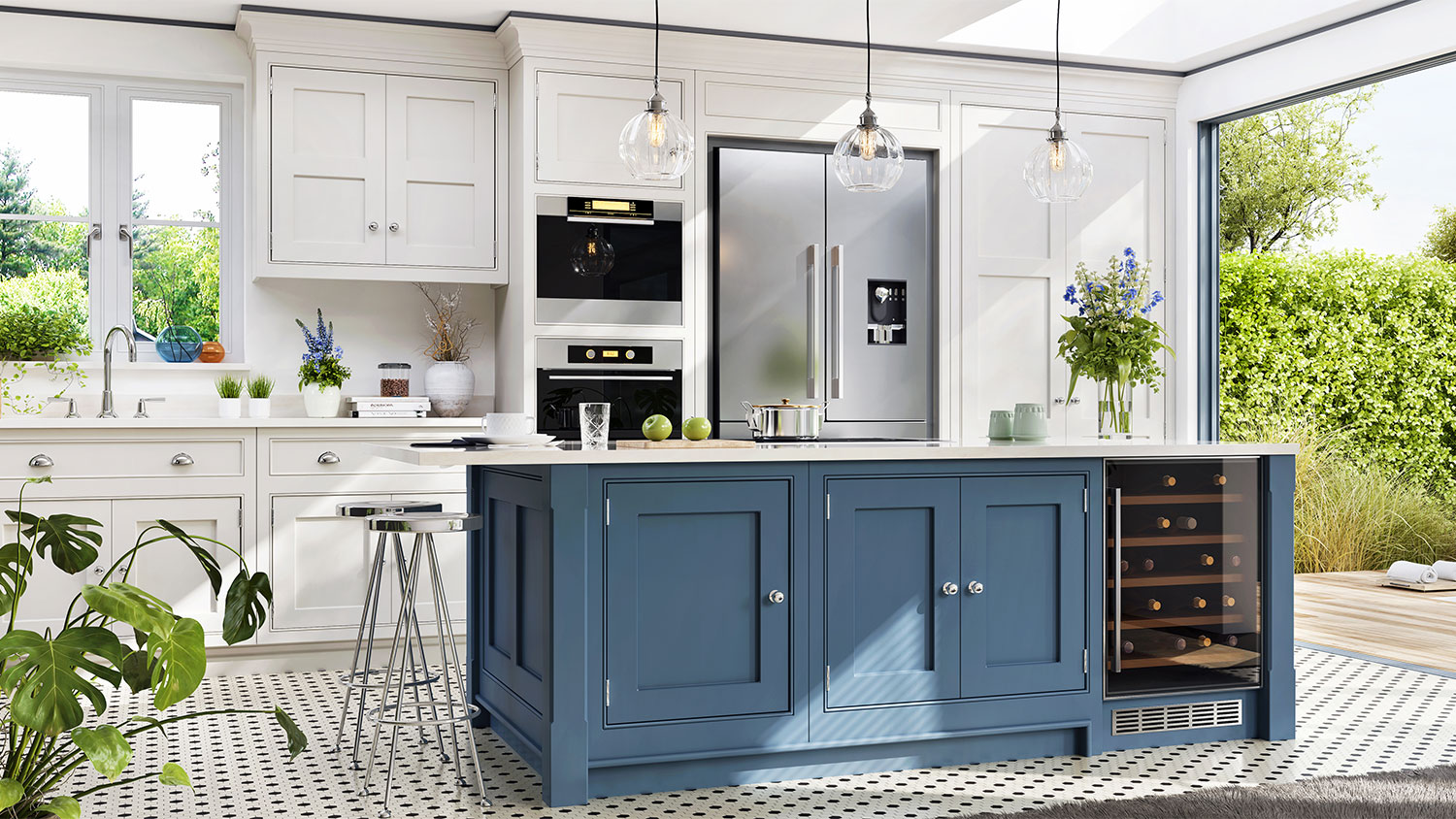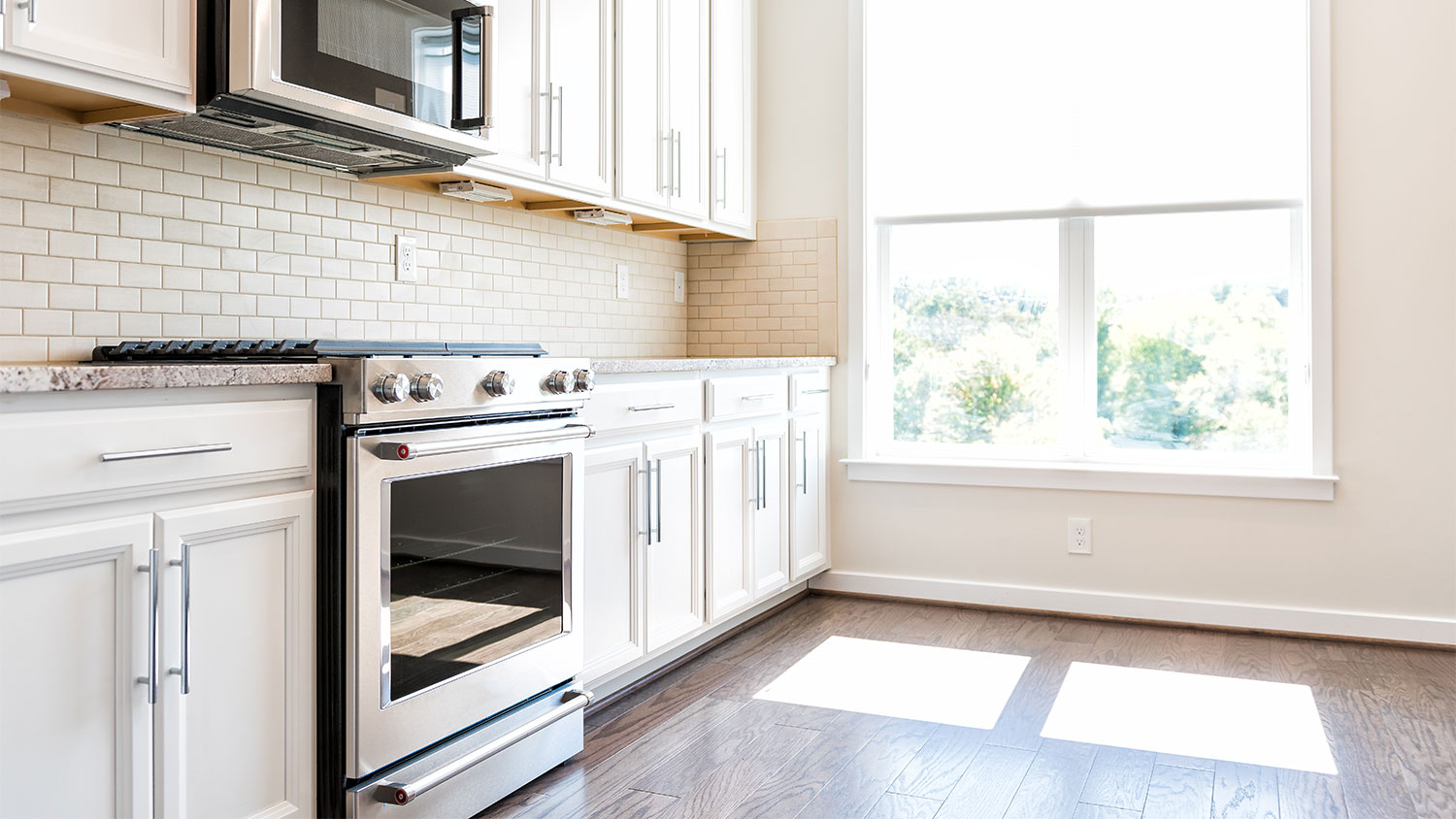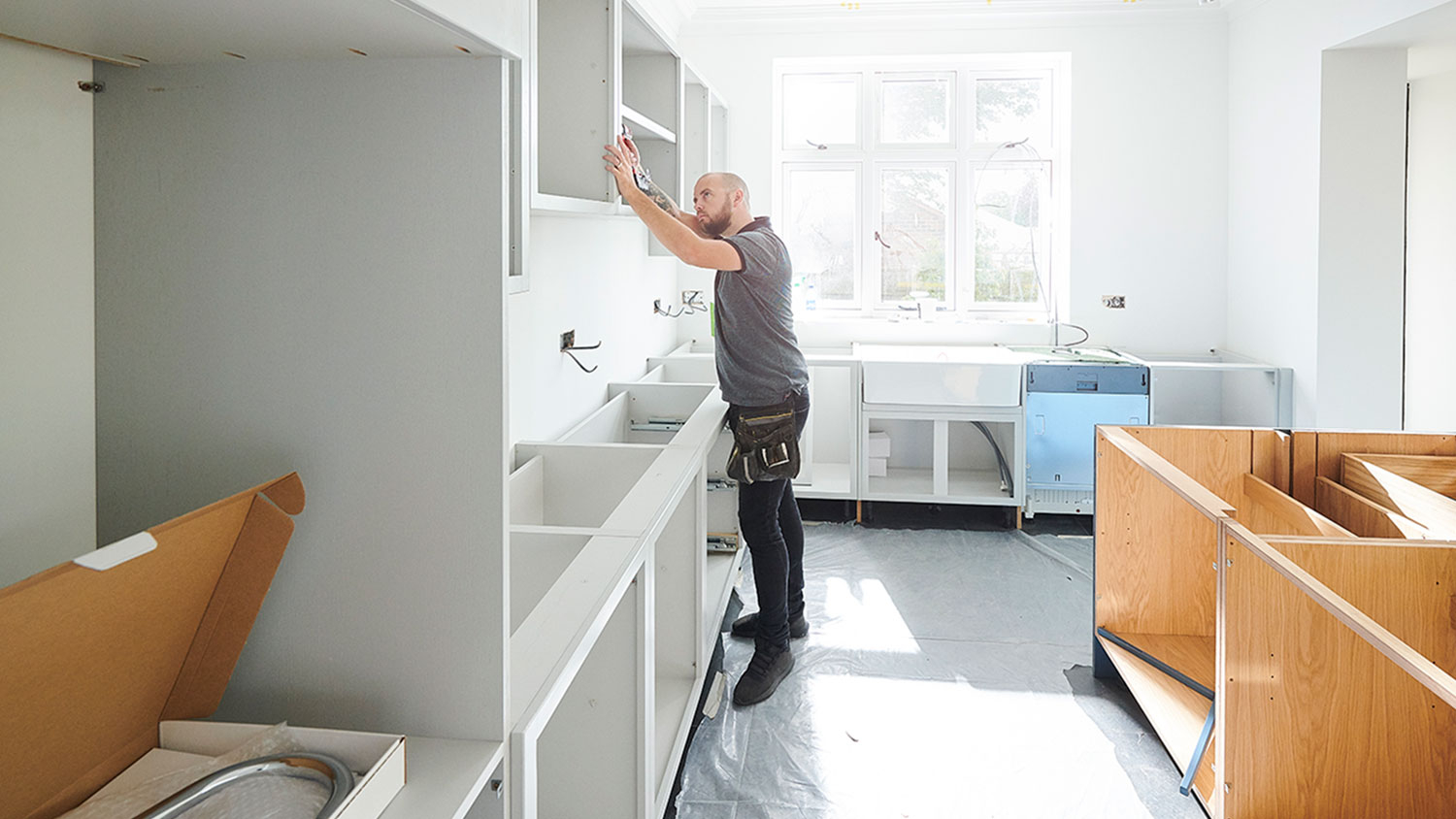
Your cabinet removal cost will depend on kitchen size and labor expenses. Find out what your budget could look like.
Inset and overlay and hardware—oh, my!


Inset cabinet doors are flush with the frame, while overlay doors sit on top of the frame.
Overlay cabinets generally cost between 15% and 30% less than inset cabinets.
Inset cabinets typically have a longer delivery time, up to a few months.
Overlay cabinets come in two options, full and partial—partial overlay cabinets do not require knobs and pulls.
Whether you're doing a complete kitchen remodel or simply looking to update the space, there are abundant choices to make regarding cabinetry. Two standard options—inset vs. overlay cabinets—will bring a different feel to the room. We've broken down the pros and cons of inset versus overlay cabinets so you can confidently make the right choice.
Many homeowners currently prefer overlay cabinets when choosing between inset and overlay. These cabinets offer a contemporary aesthetic at a more affordable cost.
Inset and overlay cabinets have fundamental differences, especially in appearance and fit. Inset cabinets have doors and drawers that sit flush within the frame, creating a custom look. Constructing these cabinets requires precise craftsmanship, making them pricier. Overlay cabinets, however, have doors and drawers that sit on top of the frame, either partially or fully covering it. This design is more flexible and usually more affordable.

Inset cabinets, also known as flush kitchen cabinets, have doors that sit flush with the frame. When you close an inset cabinet, the surface of the cabinet is flat all the way across. Depending on your preference, you can pair inset cabinets with hidden or visible hinges.
| Pros | Cons |
|---|---|
| Classic aesthetic | Higher cost |
| Durable | Less storage |
| Higher quality | Can stick when wood expands |
Best for:
Custom kitchens that prize craftsmanship
Kitchens with a traditional aesthetic
Homeowners looking for durable cabinetry
Choosing inset cabinets comes with a few benefits.
A clean, classic look
Less likelihood of getting damaged with nicks or scratches because they don't stick out
Allow you to hide the hinges
Are usually more well-made than other types of cabinets because they require a higher level of precision and skill to get everything to match up.
On the flip side, inset cabinets also have a few drawbacks.
Usually cost about 15% to 30% more than overlay options because they require more time and attention to build
Can stick in humid climates because the wood expands and may require future adjustments
Less available storage space

The doors on overlay cabinets are on the outside of the cabinet frame. You can use either hidden or visible hinges on overlay cabinets; however, you'll need to use hidden hinges if you decide to go with full overlay doors. While full overlay cabinets have doors that touch and require hardware to open them, partial overlay cabinets have about a 1-inch gap between the doors. The cabinet frame is visible, and you can install partial overlay cabinets without pulls or knobs if you prefer.
| Pros | Cons |
|---|---|
| Contemporary aesthetic | Lower quality |
| More storage | Less durable |
| Lower cost | Must align hardware properly |
Best for:
Kitchens with a more contemporary appeal
Homeowners looking for more affordable cabinetry
Busy kitchens that need every inch of storage space
A sleek, contemporary look
More storage space
Lower cost than inset cabinets because they take less precision and skill to make
May be lower quality than inset cabinets
Can be easily damaged because the doors are exposed, especially the corners
Hardware needs to line up, or it can look messy

You can choose either inset cabinets or overlay cabinets with beautiful results. Though there are visual differences between the two, selecting the best one for you depends on personal preference.
Inset cabinets have a classic look with clean lines that look more streamlined than partial overlay cabinets. Full overlay cabinets offer a similar appearance to insets, and any gaps caused by wood expanding and contracting are not as obvious. Partial overlay cabinets have a less sophisticated look than full overlay and inset, but they don't require hardware since there's a space between the cabinet doors.
Winner: Tie
The options and customizations are where you can truly show your style. Whether you're weighing the pros and cons of frameless cabinets or debating whether you want to install face frame cabinets, you’ll have the option to customize inset and overlay cabinets; however, you can expect to pay more for inset cabinets.
With inset cabinets, you can use either hidden or visible hinges. With full overlay, you'll need to use hidden hinges. You can customize both types with hardware, but partial overlay cabinets are the only type that can bypass knobs and pulls since you can easily open them without hardware.
Winner: Tie
The durability of your cabinets depends a lot on the type of material you choose. Hardwood is the most durable, while particleboard is at the lower end of the spectrum. However, when it comes to nicks and scratches, you're more likely to damage overlay cabinets than inset cabinets because the doors on inset cabinets sit inside the face frame.
Winner: Inset
When it comes to pricing, inset cabinets tend to cost about 15% to 30% more than overlay cabinets. Insets usually require more customization than overlay cabinets, and they tend to need more maintenance when the wood swells and shrinks to prevent them from sticking or gapping.
Winner: Overlay
Since inset cabinets call for customization and precision—and need to have no more than about a 1/8-inch gap between the door and frame—these are more difficult to DIY than overlay cabinets. Provided you have all the tools and materials needed to install overlay cabinets, it's a job you can DIY. If you're not feeling confident, you can always call in a local cabinet maker pro to help.
Winner: Overlay
If space is at a premium in your kitchen, overlay cabinets are the best choice. Because they're offset from the face and not nestled into it, they allow for more space to store bulkier items.
Winner: Overlay
Inset cabinets usually take more time for delivery than overlay cabinets. Since inset cabinets require more work, they can sometimes take months to make. On the other hand, cabinet makers can craft custom overlay cabinets in days, and you won't necessarily need a pro to install them.
Winner: Overlay
The cost of installing kitchen cabinetry varies widely, ranging from $100 to $1,500 per linear foot, depending on the cabinet type and style, the project size, and the labor cost in your local area. Prefabricated cabinets cost significantly less than custom cabinets, and stainless steel cabinets are much more expensive than simple wood veneer.
DIY installation of kitchen cabinets offers several benefits, including cost savings by avoiding labor fees and personal satisfaction from completing the project yourself. However, it comes with significant challenges, like the need for advanced carpentry skills and experience to achieve a professional and secure installation.
Additionally, the process can be very time-consuming, particularly for beginners, and there is a risk of making costly mistakes that could affect the quality and functionality of the cabinets. Hiring a local cabinet pro ensures a job is done right, which often comes with a guarantee that protects your investment.
From average costs to expert advice, get all the answers you need to get your job done.

Your cabinet removal cost will depend on kitchen size and labor expenses. Find out what your budget could look like.

Is it time for new cabinet doors in your kitchen? Let’s explore the costs of new cabinet doors so you know exactly what to expect.

Discover cabinet installation cost estimates, including average prices, key cost factors, and tips to save on your new kitchen or bathroom cabinets.

Any handy homeowner can tackle their own cabinet drawer replacement. Check out this helpful guide if you need to replace your cabinet drawers.

Getting stunning glass cabinets doesn’t have to be complicated. Use this guide for seamless cabinet door glass insert installation.

You don’t need a professional to teach you how to fill cabinet holes—our guide will have you sanding, filling, and staining like an expert in just a few steps.